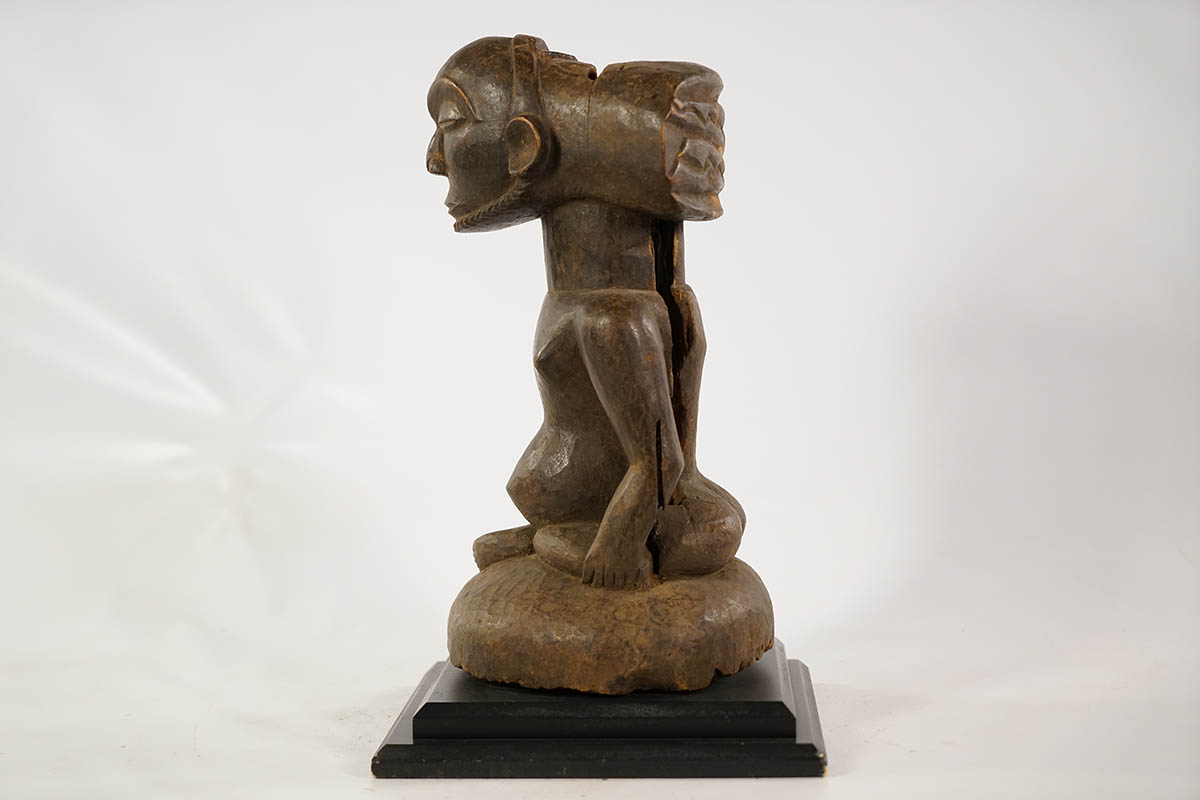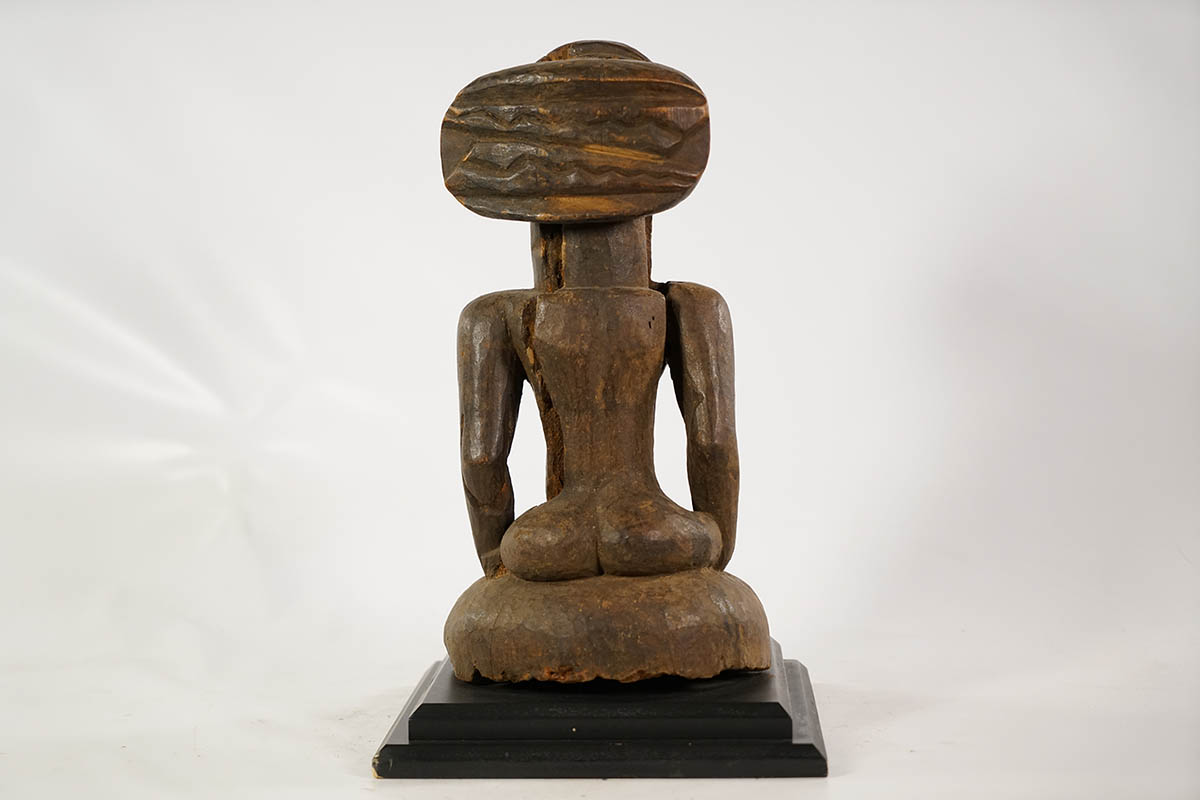Hemba figures derived from DR Congo usually represent spirits or ancestors and are often made in the human form. This wooden piece features a seated male figure, with his arms resting at his sides and his right leg in front of his body in a crisscross position. He has attractive dark brown coloring, and is mounted to a wooden base. There is a hole that goes from the top of the head all the way through the statue, but is sturdy and stable – it looks as though they carved the statue from a partially hollowed tree. Please inspect photos or inquire for more detailed information.
| Type of Object | Figure |
|---|---|
| Country of Origin | DR Congo |
| Ethnicity | Hemba |
| Material | Wood, Pigment |
| Approximate Age | Unknown |
| Height (Inches) | 15" figure, 17" including base |
| Width | 7.5" |
| Depth (Inches)" | 7.5" |
| Weight (Pounds) | 6.5 lbs |
| Overall Condition | Wood is hollowed through center but is sturdy. Imperfections and wear and tear. |
Tribe Information
About the Hemba People
“During the 18th century, the Hemba people, led by their chief Niembo, migrated from the south-west and settled on the right bank of the Lualaba River, in a region of fertile savannah. Today, they number 80,000 and are divided into large clans which, by definition, are families with a common ancestor. The hereditary chief of each clan is called the Fumu Mwalo and is the keeper of the ancestor figures. He renders justice and his status as clan head means that he has a privilege of receiving numerous gifts. The Hemba live mostly from farming manioc, sesame, yams and beans. Secret societies such as Bukazanzi for the men and Bukibilo for the women counterbalance the Fumu Mwalo’s power.
Two types of Hemba mask have been identified so far: the first is the rarest and displays a perfectly symmetrical human face with a small mouth and a linear nose set between two slanted eyes. The second type of mask imitates a monkey face with a large, pierced, crescent-shaped mouth and pointed nose. The function and meaning of these masks remain obscure.”
Source:
Baquart, Jean-Baptiste. The Tribal Arts of Africa. New York: Thames and Hudson Inc. 1998. Print.







